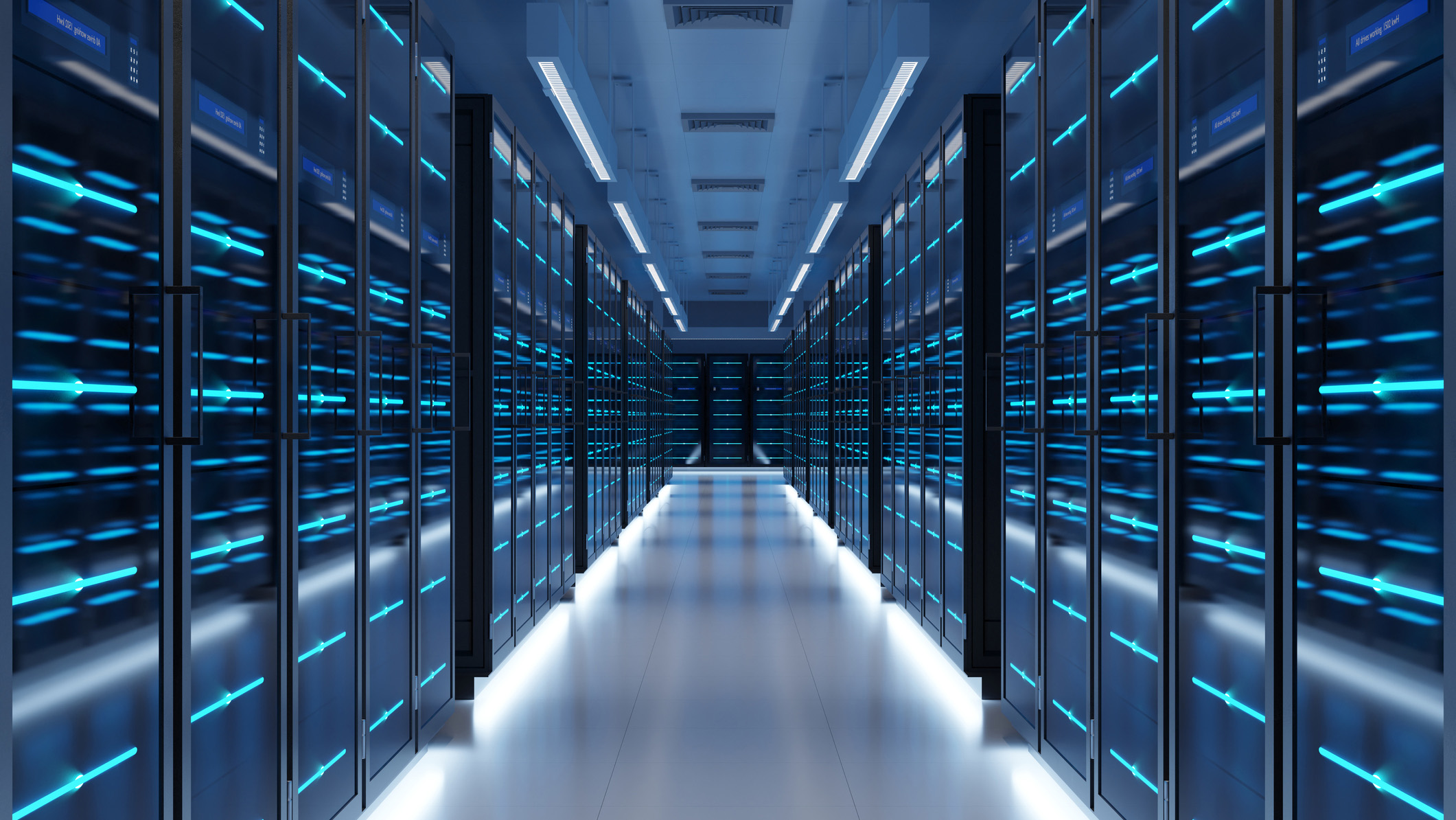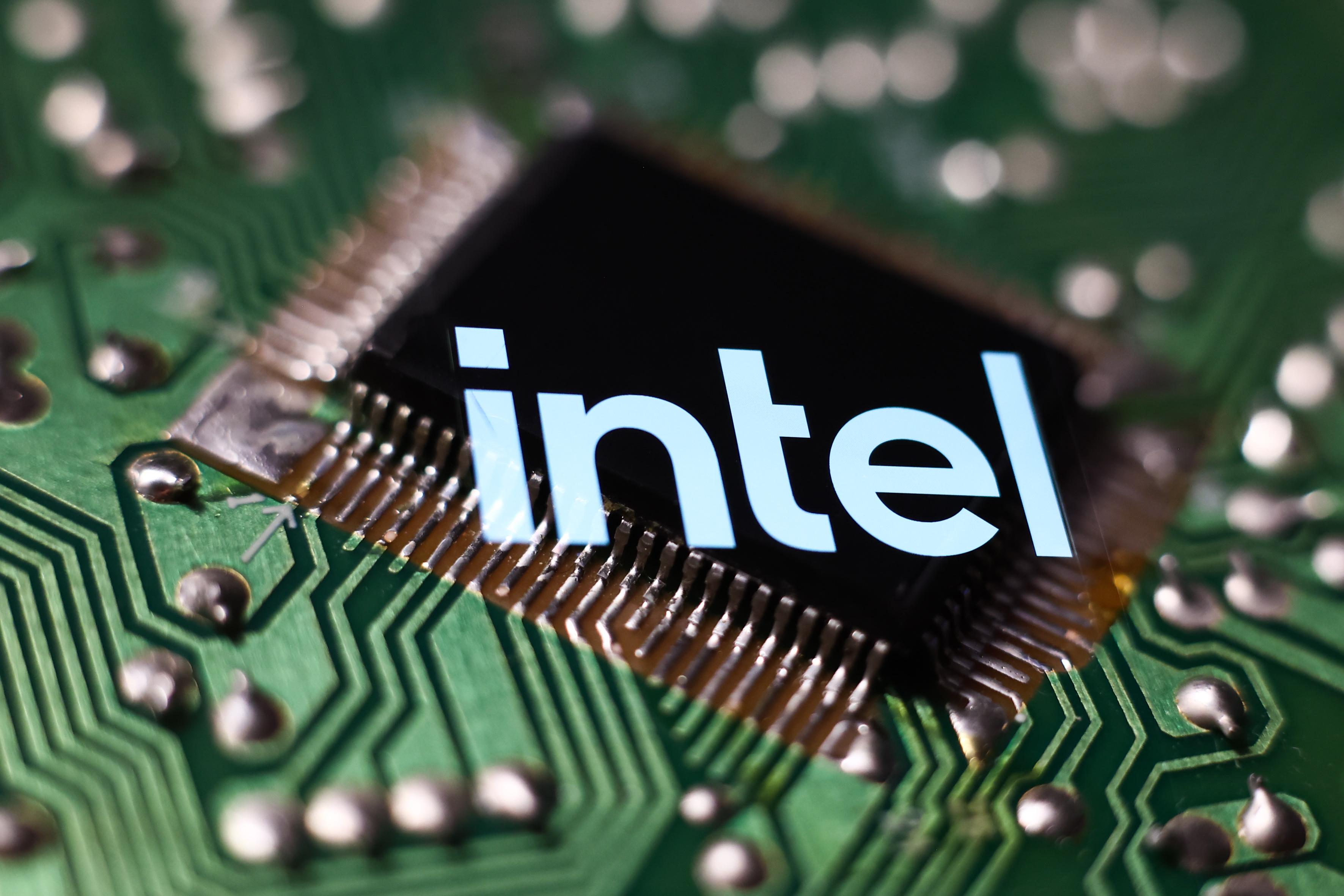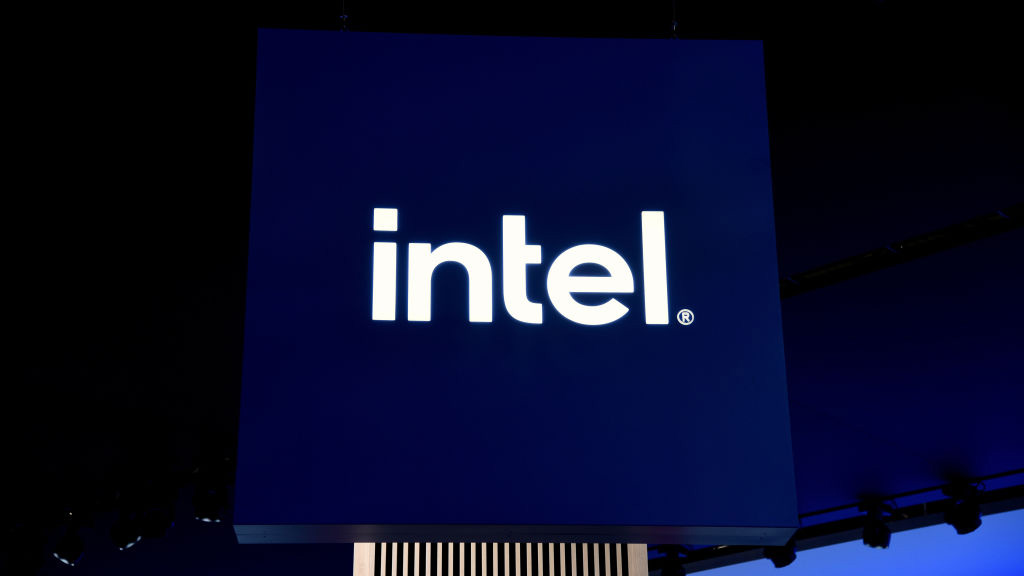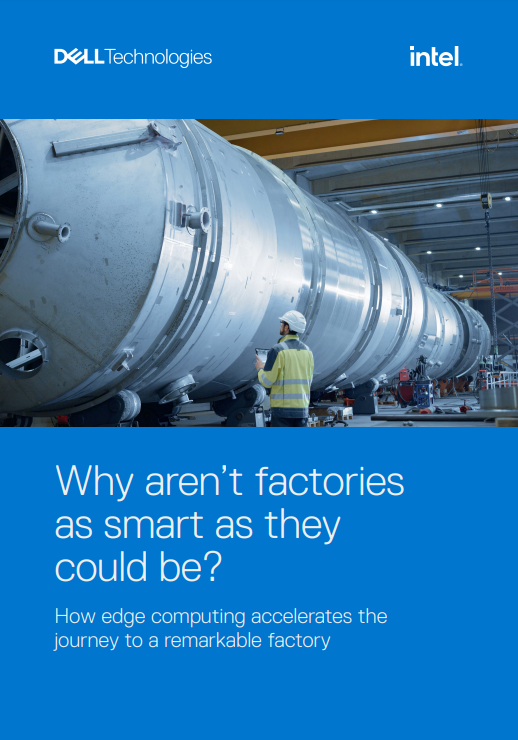Q&A: Intel’s enterprise head on the Nehalem effect
Intel's enterprise server director Richard Curran discusses the Nehalem effect, CERN’s plans, and explains why cloud computing is like renting a car.


It's been a rough year for hardware, with the recession hitting IT budgets and delaying upgrades. But that hasn't dissuaded Intel, which claims the Nehalem effect has helped spur server sales.
Launched in March, Nehalem is the latest microarchitecture from the chip firm, and Richard Curran, director for enterprise server for Europe, the Middle East and Africa (EMEA), believes its arrival has helped the market recover.
Speaking to IT PRO at the CERN physics lab in Geneva, Curran also explained how his firm works with early adopters like the famous physics lab, and tells us why he thinks cloud computing isn't all that complicated it's just like renting a car.
It's been a rough year for hardware. Earlier, Intel said PC shipments weren't all that bad and recovering. How are servers and the enterprise market faring?
Server [shipments] are actually picking up. We've had a very challenging first quarter and but getting better into the early part of the second quarter.
We had a great Q3. So far, Q4 is looking fairly good. We've seen some demand come back into the market. One thing that's pretty generic is most recessions we tend to lag the US. The US has seemed to come out of it a lot stronger, especially in IT. So we've seen very, very strong results in North America in Q3, and there started off Q4 quite well. So in actual fact, their market has recovered faster than EMEA.
There is a good and a bad side. The bad side is, we're still not there. The good side is we generally lag them by two or three quarters so if we're seeing a good Q3 and good Q4, we're more optimistic about 2010, as the business tends to lag, generically.
Sign up today and you will receive a free copy of our Future Focus 2025 report - the leading guidance on AI, cybersecurity and other IT challenges as per 700+ senior executives
And I suppose really you could typify it in one respect. If I had to be selfish, I'd call it the Nehalem affect, that we launched the product on March 30 and all of our partners had products ready to just launch very soon after that, within a week or so.
Some had actually [launched] slightly before. Apple launched in February and Dell were probably mid, late march but all of our partners had products ready to launch...
Because of the Nehalem effect, we've seen a dramatic acceptance of Nehalem in the market. It's the fastest transition of a product in the market I've seen since I've been at Intel for 10 years.
What's driving take-up of Nehalem?
What we tried to do is make customers understand that it's about your total cost of ownership, it's not just about buying the latest gizmo or the latest server. So even when certain markets were still growing remember, 57 per cent of budgets in IT were never reduced this year they were actually held the same, despite the economic situation... It may be difficult to spend them, but at least the budgets were made available.
So what has happened is people started looking and saw, "wow, I can get so much performance by actually upgrading". Now some of them have already paid off their servers over a three four year business cycle, some of them had one or one and a half years to go, so there's still some depreciation of those products.
But we found even with depreciation on those products, it was still more cost effective to buy Nehalem. You see, one of the things about the Nehalem architecture, every time we shrink the die we're able to add more functionality into the die. It's not just pure raw CPU. So we have this performance effect but then what we have is the ability to get better virtualisation capabilities and there's about a million transistors in there alone, of the 780 million transistors, that actually manages the power.
So when you have this single threaded application or workload, it actually starts to turn off a lot of things around it. And when suddenly it flicks over to a multithreaded environment it fires up the core.
The previous quad core product had five, sorry, three power states. We now have 15 power states. In other words, it has various different power levels. Before you could go high, medium, low. Now you've actually got 15. So at any time, given the status of the workload coming in, it would actually fit to the right state dynamically.
As a result, customers were seeing brilliant energy efficiency savings as a result. Customers were seeing, even through tough times, it was actually worthwhile investing because the net savings were just so spectacular. That's what I've seen as we saw Nehalem ramping. We saw more and more customers actually buying it, because of the net savings from it plus they were able to refresh their data centre and were able to drive more efficiencies.
How do you work with CERN? We're here at their labs, how do you support their work, and how do they support yours?
It started many, many years ago, when they started working on their first ATLAS project. Obviously they need all the technology, but one of the things they wanted to do is, given their requirements, and engineering capability they have, they wanted to understand how much data can they actually transact through their server technologies.
So in discussions with them about their types of servers, one of the relationships we've built up [is like] "if you guys can go and analyse and work those servers and feedback to us the conditions of those servers..." In other words, they might come back and say, "we're going to see a bottleneck" or "I think your compilers could be optimised better if you do this" or "if you had drivers so and so"...
They got in touch with our software division - we have 6,500 people in our software division - and what we have done is started to collaborate way, way back many years ago with CERN so that they could become sort of the night watchman for us, say "you know something, this is really good, but if you were able to do this in your next generation of your technology, this is when you're going to start seeing some real performance."
Now they're not the only ones we work with. We work with the financial sector, we work with some of the manufacturing [industry], BMW and so on. We work with a couple of different types [of companies] to get an overall view because we're a manufacturing company, you know?
So when we create and develop CPUs, we have to make sure that those CPUs can actually be absorbed and the benefits can be seen in all communities SMB, SME, and all types of veritcals. But certainly for high performance, CERN is a great partner of ours.
They started the openlab, which is a number of partners they'd like to work with in collaboration, to understand how they create an environment. You've heard the amount of data transactions that they'll have coming from the experiment? They don't have enough in the data centre to be able to manage the amount of information coming through.
So what they've decided to do is open up a grid compute capability. Getting universities and scientific research entities around the world to connect via a grid so that when they take the data. [And] they're going to take slices of the data and distribute them to various different centres around the world to actually analyse. They'll be able to understand then, as a collaboration, as a community, how they can actually diagnose the data coming through.
Obviously they're looking at grid computing capabilities and clustering capabilities, the ability to transfer large blocks of data and compute them quickly and get the results back. It's not just the analysis and computational analysis, there's the feedback and so on and so forth.
How does Intel come into this?
From that, we've got a really good relationship with them. We give them early access to our products. In our process and manufacturing, we're already working on Sandybridge, which we come out with in 2011. But we're already working on 2014, and 2015, and 2016, so we would have some of our engineers come around and listen to people, asking "if you could think about your compute needs in 2015, what would they look like?"
So we need some really bright people to work with, who can actually understand that. We take that feedback and say "this is how we think the market will respond, here's the compute needs of the future". And it's not just pure performance because we would imagine performance is going to be endless, but in so far as encrypting capabilities, security capabilities, virtualisation capabilities, and energy efficiency capabilities.
In other words, [we think] about trying to drive energy efficiency when the computer is fully loaded, but what about when the computer is not loaded, the idle states? Can we get to a different idle state so when the data centre is partially used or not used, what is the energy consumption of the server?
We're working on various different projects with people like that to help us understand how we can develop better technology.
What is CERN testing now?
What they're doing right now is looking at trying to make their data centre more and more dense because what you heard from Sverre [Jarp, openlab CTO] is they have a very old fashioned data centre.
Now, the one thing about CERN is they're different from some others... if for instance their servers are down for the day for some reason, it's not like a bank. They're mission critical, but they're not business critical. Now when they start doing the testing, it'll be business critical to a degree.
They've got a very old data centre. Now the thing we're trying to understand is, if for instance, you were a CFO and you were on a board, and you're going to say you need a new data centre, if you're going to build a new data centre, how long will that data centre last? 10 years, 12 years, 15 years? In other words, if you were building a data centre today, that data centre has to be functional in 2020. What are my compute requirements in 2020? You don't know, I don't know.
But it's a very expensive investment, with an element of risk. What you've got to do is think "what if we didn't build out a new data centre, what if we were to manage within that data centre envelope?" This is why a lot of companies want to talk to Intel "where are you guys going investing $5 billion a year, because I'd like to work out [whether] I'm good for one data centre, or do I have to build another data centre, and can I live within that one data centre?"
So the likes of CERN, what they're looking to do is continue to look at how dense their compute capability will be without having to modernise their data centre.
They're looking to what the data centre of the future will be?
You can do two things, you can build a new data centre, or you can actually add more power, more megawatts to it. If you add more power, it's going to cost you. If you build a new data centre, it's going to cost you.
So if you can actually manage your business requirements within that one envelope it's great. What they're looking for is [the] need [for] more energy efficient, high compute capabilities more densely packed compute capabilities so that they can meet the needs of their business.
Now, if I was going to build a data centre, what does that data centre actually look like. How big does it have to be?
That's sort of the challenges a lot of CTOs have moving forward. Where's the world global market going to be? How is my IT going to add value to my business? What is the size and compute capability of my IT moving forward in a global environment and how flexible does it need to be?
And that's where I think cloud comes in. Cloud is a business model. Us techies like to confuse it, make it more complicated than it really is, it's PaaS, it's SaaS, it's this, it's a business model, it's the ability to be able to get a transactional compute capability to support my business, when I need it.
How would you explain the cloud, then?
Some people have said all different types of analogies, the analogy I use is: it's like going to a rental car company.
I've got my own car at home, my car meets my needs... but when I go to a rental car company, I actually get the car that I need, to meet my requirements And if I'm with my family, or on my own, or if I'm going on a long journey or going on a short journey, I decide on the capability for the specific task at hand.
That's what you'll start seeing: businesses being able to utilise a particular capacity to be able to meet their needs. And that's the opportunity companies have and the ability of dynamic computing to be able to meet the needs of their business moving forward.
If you have an infrastructure today, that is proprietary, or inflexible, you're going to run into serious problems, because the business dynamics are becoming much shorter and much more dynamic and the lifecycles of those are much shorter. So, if you haven't got an IT infrastructure that is as dynamic as your business requires it to be, it becomes a real burden a cost burden.
You need a very flexible environment. Wouldn't it be great to have utility compute environment, where you'd just be able to say, "I need capacity because it's critical at Christmas because I'm going to sell some toys," but on January 1, I'm going to do something else...
You have this very dynamic world, where business cycles are much shorter, more dynamic, and if your IT infrastructure is not dynamic enough, or flexible, then you're going to struggle. So what your seeing is a real pressure on the proprietary environment, the legacy environments, because they're not they're very rigid, they're single task orientated.
And that's why you're seeing a lot of people migrating away from RISC platforms and legacy platforms, to be able to do the job. What they want is seamless dynamic compute environments faster, cheaper, more energy efficient, more virtualised, more dynamic and more scaling out capability.
Plus you have the ability to think maybe when my data centre is full, maybe I can go to another data centre, vis a vis, maybe I can buy that utility capacity as a service. So you're going to see those dynamics play out.
We're at a major inflection curve in the market and it's probably one of the more exciting times in the market. This is what makes it so interesting, because all these business dynamics are actually playing out. And the IT needs to be able to support that. And those that haven't, are actually going to lose. And those that have are actually going to win.
So those trapped by legacy systems need to make a move now?
Absolutely. Now there are companies that run a specific task there was a mention of IBM using Cobol. There's a particular application there that'll be running for the next 10 years, but what you hear from customers [is] that application and that function, is just left there.
But anyone looking to grow their business, you could be looking today's infrastructure and if you move out four or five years, that infrastructure could be the same. But by and large, purely your data centre will look different in so far as the types of flexibility you're going to need in your data centre is going to be a lot more different.
So it's the new business opportunity that I see that will actually drive a new dynamic in the market. But if you're not flexible, and you haven't got an open standards platform, and you haven't got the ability to scale with your business and look at private clouds as well as external clouds, you're going to be in serious trouble.
Is that where companies are at the moment? And is it really time to make a move to the cloud?
The cloud is still immature. Virtualisation is, to a degree, immature. The way I describe it to a lot of people, virtualisation is like a marathon, we're probably at about 5k. We're coming down to virtualisation 2.0, maybe thinking what 3.0 looks like. Virtualisation will mature.
Two years ago, you couldn't put two un-identical servers together, and actually match them and be able to seamlessly manage the workload. Now you can, you can mix and match servers with our technology called flex migration... the systems themselves will be able to move the workload, to be able to do the workload. That is a feature that has only really come in the last two years.
You'll see all these things maturing over time... Say if you said, "this is great, we'll move to cloud", you'll move all your applications or all your data onto a cloud, what happens if this company goes bust, what happens if you lose the data, what happens if they haven't got a good DR? What happens? Are you completely exposed?
From a capability perspective and a common sense approach, from multi-tenancy, to security, to the ability to manage... say for instance, you go to a particular cloud partner and they decide to hike their prices? You decide that's not cost effective can I actually move my data onto another service? Probably not, not at the moment.
But I can tell you one thing, it's maturing fast and is a model that will succeed. We're right now at the top of the hype cycle, and I think you'll see in 2010 people will be blowing holes in it, but what you'll see, as we come out of that, it will actually become a very viable platform.
Freelance journalist Nicole Kobie first started writing for ITPro in 2007, with bylines in New Scientist, Wired, PC Pro and many more.
Nicole the author of a book about the history of technology, The Long History of the Future.
-
 Trump's AI executive order could leave US in a 'regulatory vacuum'
Trump's AI executive order could leave US in a 'regulatory vacuum'News Citing a "patchwork of 50 different regulatory regimes" and "ideological bias", President Trump wants rules to be set at a federal level
-
 TPUs: Google's home advantage
TPUs: Google's home advantageITPro Podcast How does TPU v7 stack up against Nvidia's latest chips – and can Google scale AI using only its own supply?
-
 Gaining timely insights with AI inferencing at the edge
Gaining timely insights with AI inferencing at the edgeWhitepaper Business differentiation in an AI-everywhere era
-
 Scaling AI from pilot to production: Maximize AI impact with HPE & Intel
Scaling AI from pilot to production: Maximize AI impact with HPE & IntelWhitepaper Transform AI proof-of-concepts into full-scale implementations
-
 UK supercomputer boom as HPE and Dell receive funding for new AI cluster
UK supercomputer boom as HPE and Dell receive funding for new AI clusterNews The UK’s AI computing capabilities will increase by an order of magnitude in 2024
-
 AI gold rush continues as Hugging Face snags $235 million from IBM
AI gold rush continues as Hugging Face snags $235 million from IBMNews The investment round, which brings the company's valuation to $4.5 billion, also includes Amazon, Google, Intel, and Salesforce
-
 Why is ASUS reviving Intel’s NUC mini-PC line?
Why is ASUS reviving Intel’s NUC mini-PC line?News The diminutive PC is to rise again while analysts look for the business case
-
 Intel targets AI hardware dominance by 2025
Intel targets AI hardware dominance by 2025News The chip giant's diverse range of CPUs, GPUs, and AI accelerators complement its commitment to an open AI ecosystem
-
 Why aren’t factories as smart as they could be?
Why aren’t factories as smart as they could be?Whitepaper How edge computing accelerates the journey to a remarkable factory
-
 Who needs Intel vPro®, An Intel® Evo™ Design, anyway?
Who needs Intel vPro®, An Intel® Evo™ Design, anyway?Sponsored With flexible work on the up, the demand for high performance on-the-go business laptops has never been greater
